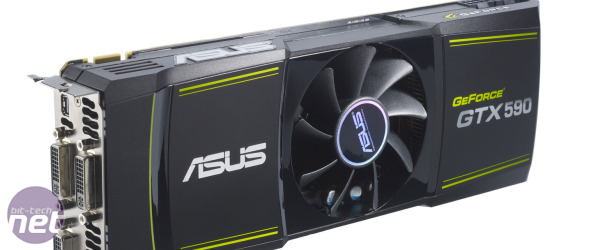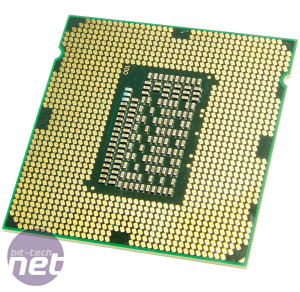PC Hardware Buyer's Guide May 2011
May 10, 2011 | 13:17

Premium Player May 2011
When only the best will do, there’s a great choice of hardware out there to cater for your needs, providing premium performance for a premium price tag. However, even with a high budget, we’re not out to waste money - building a top-end system isn’t as simple as just buying the most expensive components out there and slinging them all together. If you’ve just bought that 24in or 30in monitor, surround sound speaker kit and a comfy leather chair with footrest (or sub as it's also known) and you're looking for some kick-ass performance that won't wait for anyone, this is what we consider the very best hardware at the moment.| Premium Player | |||
| Product | UK Price (inc VAT) | US Price (ex tax) | |
| CPU | Intel Core i7-2600K | £240 | $315 |
| Motherboard | Asus P8P67 | £120 | $160 |
| Memory | 8GB 1,600MHz DDR3 | £85 | $80 |
| Graphics Card | Nvidia GeForce GTX 590 | £580 | $750 |
| PSU | XFX Black Edition P1-750B-NLG9 | £90 | $130 |
| CPU Cooler | Thermaltake Frio | £40 | $60 |
| Case | SilverStone FT02B | £200 | $250 |
| Optical drive | SATA DVD-RW | £15 | $20 |
| Storage (HDD) | 2 x 2TB Western Digital Caviar Black | £240 | $320 |
| Storage (SSD) | Crucial RealSSD C300 128GB | £170 | $250 |
| Misc | HighPoint Rocket 620 | £30 | $25 |
| Sound Card | Asus Xonar DX | £55 | $90 |
| Overall Price: | £1,865 | $2,450 | |
New This Month
We’ve rung the changes with our premium player build this month, and at the top of the list of alterations is a change in CPU. We’re opting for the Intel i7-2600K, which belongs to Intel’s LGA1155 family of processors. This may be something of a contentious swap, as Intel’s LGA1366 range of processors are technically supposed to cater for the extreme top end of the market, but we’ve found the i7-2600K to be more than a match for processors even three times its price.The i7-2600K beat the £750 LGA1366 Core i7-980X by a solid 80 points in our Media Benchmark suite at stock speeds, for example, and this lead only increased when we overclocked the processors too. Gaming also tends to favour LGA1155 processors thanks to their high-IPC architecture. Of course, the i7-980X pulls ahead in heavily multithreaded applications thanks to its two extra cores, and if these kinds of applications are your bread and butter then you'll be slightly better off with an LGA1366 system. For everyone else, though, the i7-2600K reigns supreme.

The motherboard we’ve chosen to use for the build is the excellent Asus P8P67. It’s been our favourite for a little while now, and saw off the challenge of Asus' Sabertooth P67 this month. However, we recommend checking back to the site in the coming weeks, as we’ve got plenty more B3-stepping P67 boards in the labs at the moment, any of which could dethrone the P8P67 as our favourite P67 board.
Changing the motherboard has also meant changing the RAM in the system. We’re still opting for 1,600MHz modules, but we’ve gone for a touch of luxury here and dropped in a full 8GB, as opposed to the 4GB we use in the other systems in this guide. One good feature about LGA1155 systems in this respect is that you don’t have to worry about memory straps and Base Clock ratios when overclocking a LGA1155 based system, as nearly all overclocking is carried out via the CPU multiplier.
There have also been changes in the GPU department, with the Nvidia GeForce GTX 590 3GB replacing the Nvidia GeForce GTX 580 1.5GB. Of course, it's debatable whether this upgrade is really worth the money, as the GTX 580 1.5GB can still play most games comfortably on a 30in screen; arguably the GTX 590 3GB is actually overkill. Having said this, if you really want the fastest graphics card you can get for any amount of money, then the GTX 590 3GB is the card you want. It also has the benefit of offering a greater amount of future proofing than the GTX 580 1.5GB, and with big game releases such as Battlefield 3 and The Elder Scrolls V: Skyrim on the horizon, it's good to know you'll be able to play them at decent settings.
 We’ve also upgraded the storage in this build by removing the single 1TB Samsung SpinPoint F3 drive and replacing it with two 2TB Western Digital Caviar Black disks. This may seem excessive on the face of it, but anyone building a premium rig is likely to be a heavy PC user, and is likely to have built up a large library of data. If you think this amount of storage is overkill, then feel free to drop back down to a single disk.
We’ve also upgraded the storage in this build by removing the single 1TB Samsung SpinPoint F3 drive and replacing it with two 2TB Western Digital Caviar Black disks. This may seem excessive on the face of it, but anyone building a premium rig is likely to be a heavy PC user, and is likely to have built up a large library of data. If you think this amount of storage is overkill, then feel free to drop back down to a single disk. Complementing the hard disks is a 128GB Crucial C300 SSD, which we’ve hooked up to a HighPoint Rocket 620 that enables blistering SATA 6Gbps speeds. There's no need to hook the hard disks up to this card (there's only one other port anyway) as they’ll see no benefit. We’d install Windows, games and slow-loading applications to the SSD, and everything else to the hard disks.
And The Rest
All this lovely expensive kit is housed in the arrestingly beautiful SilverStone FT02R-W which, as a bonus, is also ace at cooling even a monster PC. This is due to a combination of the case's excellent Air Penetrator fans and its quirky rotated motherboard tray; a feature which is sure to make your killer PC a talking point. We’ve recommended the black version of the case, as this is available worldwide. However, if you want to get hold of the limited edition version of the case with the red interior that we reviewed, then look out for the R-W suffix in the listing.If you want to take the cooling capabilities of the Premium Player a step further, then you can also invest in water-cooling. If you want to go down that route, then we recommend swapping out the FT02 for the gigantic SilverStone Temjin TJ07. You’ll need to stump up some extra cash for your waterblock, tubing, radiator, reservoir and pump too, although we’ve not done enough testing here to recommend specific products in these areas. If you need advice in this area though, you can always check out our water-cooling 101 and 201 features and ask in the forums.
If you’re not going to venture into the world of water-cooling, though, then the CPU cooler we’ve chosen is the Thermaltake Frio, which blasted through our thermal benchmarks. It’s an excellent cooler, but it can be a little loud at its highest settings. For those valuing quietness over absolute cooling ability, the Be Quiet! Dark Rock Pro is also worth a look. It’s a lot quieter than the Frio, and offers only slightly less effective cooling. However, it's only available in Europe at the moment.
We’ve also added an Asus Xonar DX sound card to avoid conflicts with the motherboard's Realtek audio codec and enhance the sound generally. If you're really into your audio, you might want to consider replacing the Asus Xonar DX with the Asus Xonar Xense Audio Bundle, which is finally on sale and costs under £200.
On the PSU side, our sister mag Custom PC recommends the 750W XFX Black Edition P1-750B-NLG9, which won its Premium Grade award for its price and performance, rather than its name. To quote the review: 'at just over £100, the 750W XFX Black Edition...is great value for money. If you're in the market for a 700-799W PSU then it should be at the top of your shopping list.' To round off the build, there’s also a cheap SATA DVD drive.
If you haven't got a copy already, you should also factor in a copy of Windows 7. If you're confident that you won't be upgrading your motherboard, then an OEM copy should be fine, but serial upgraders need the pricier retail version.

MSI MPG Velox 100R Chassis Review
October 14 2021 | 15:04









Want to comment? Please log in.